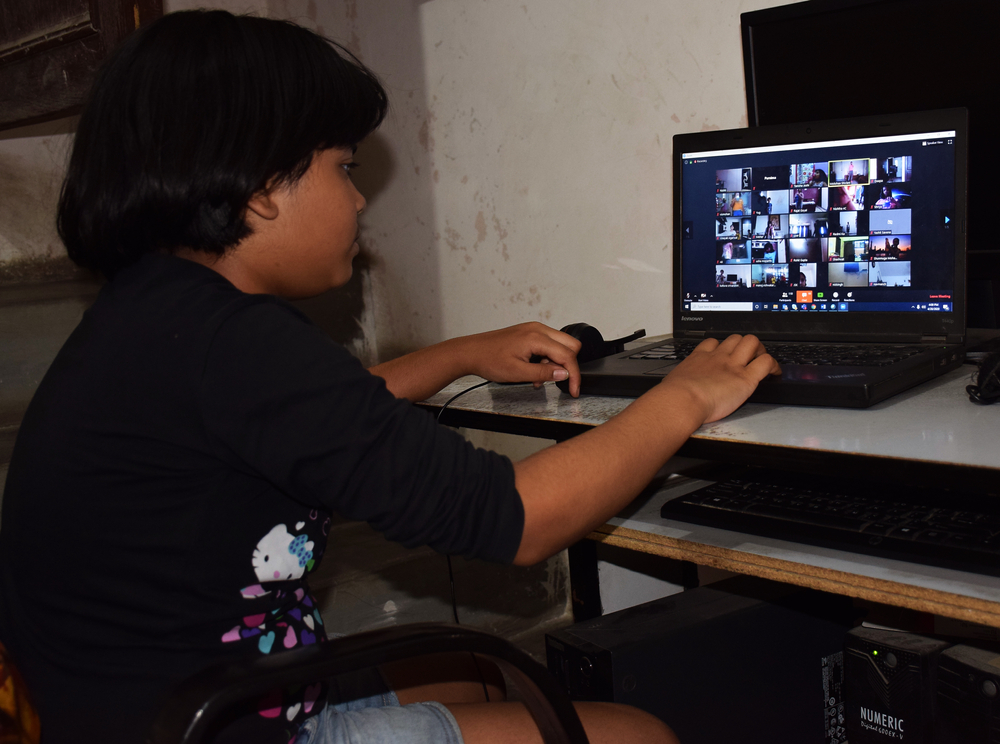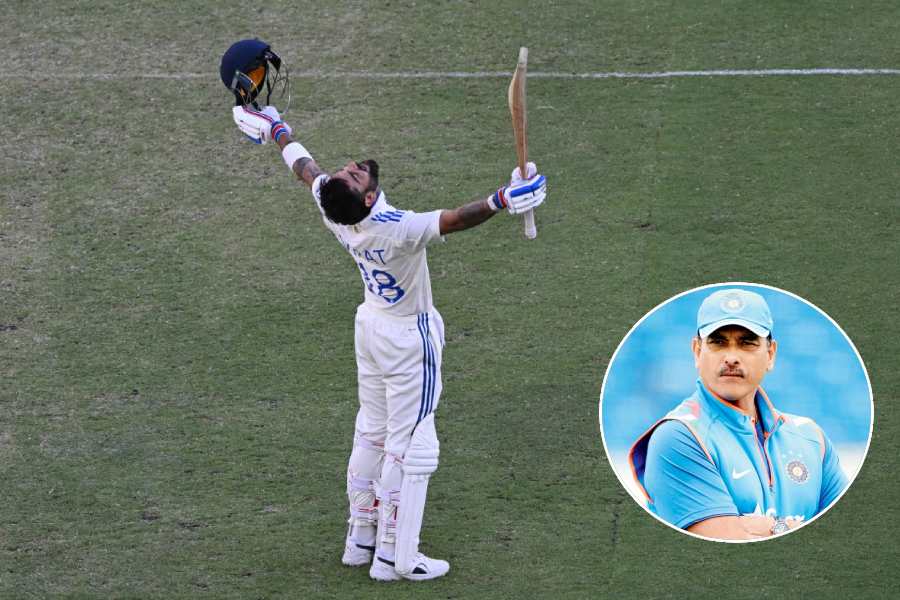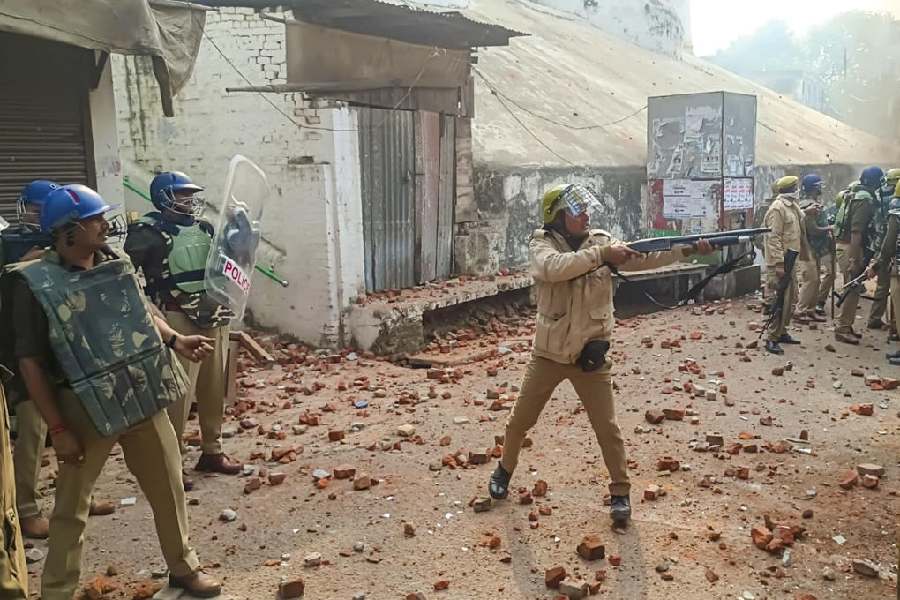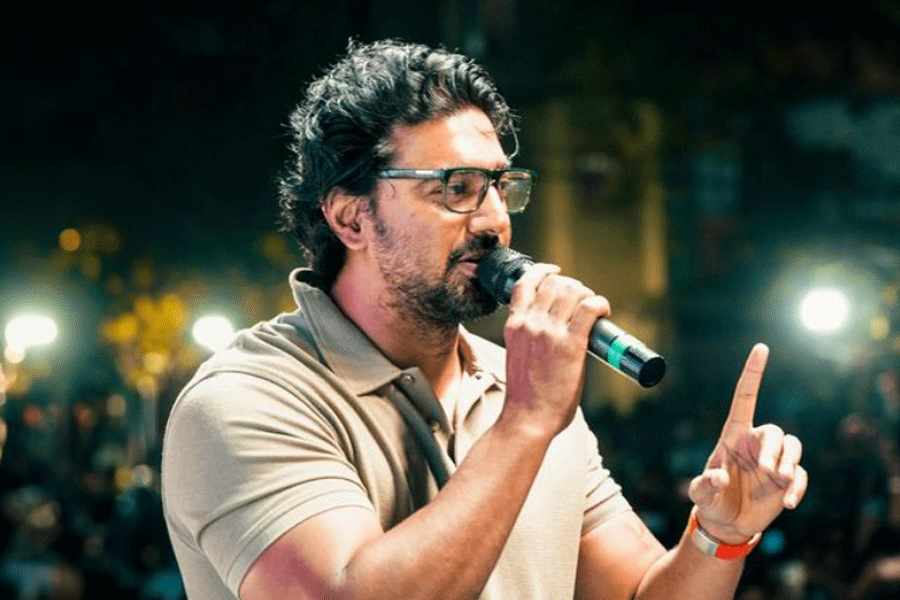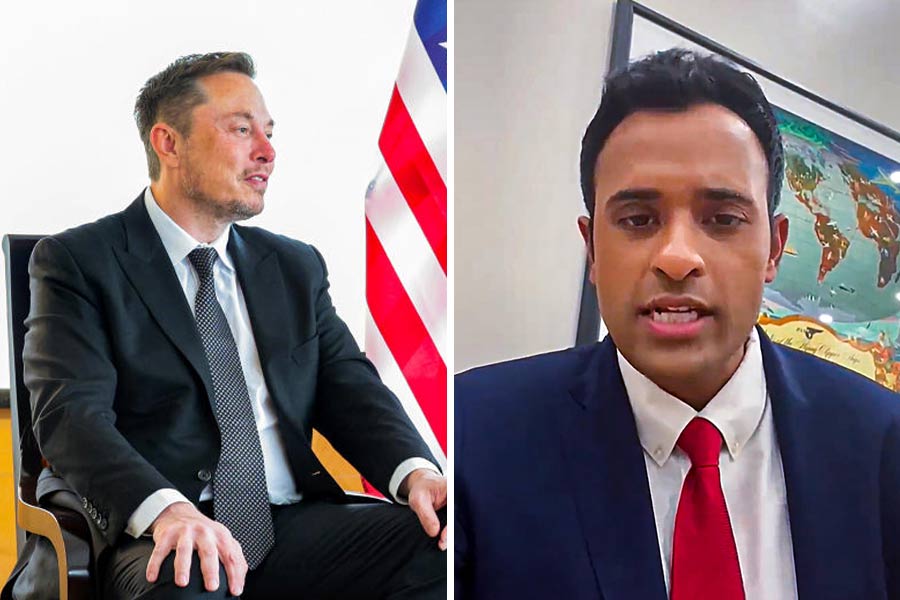Vaaridhi Tulsyan, a Class VI student of La Martiniere for Girls in Calcutta, last went to school on March 13 before it closed due to the Covid-19 pandemic. She has been learning via video apps and instant messaging platforms ever since. Every morning she dresses neatly and sits at her study table to attend “class”, take notes and ask a question or two to clear her doubts. Homework is posted on her class group.
Vaaridhi misses her school, friends and teachers but is enjoying the videos and “story form” of lessons. “This helps me focus better and I can remember my lessons easily.” But she doesn’t like the fact that they have to download so many apps and there are frequent network problems. “The connection gets snapped every now and then. You have to wait patiently till you can reconnect,” she says.
Abhiroop Chandra is a Class VI student of South Point High School in Calcutta. He finds online classes more interesting as teachers embellish the lessons with various pictures and videos. “Blackboard lessons in school were not so interesting,” he says. However, he has a few problems too. He says, “We have not been able to procure our textbooks as yet. We have to depend on notes given to us by the teachers.” Besides, he misses his friends and the playground at school.
Vaaridhi and Abhiroop are among the 1.723 billion children — estimated by the United Nations Educational, Scientific and Cultural Organisation (Unesco) — worldwide affected by school closures due to the pandemic. This is nearly 98 per cent of the world’s population of children. Over 320 million of these learners live in India. As a result, demand for online education has skyrocketed. The world has seen a surge in the use of online learning apps, video conferencing tools and virtual tutoring software. Classes on Zoom, WhatsApp, Google Duo, Microsoft Teams and Skype have become the norm. But this sudden transition to online learning hardly compensates for classroom experience.
Paromita Mukherjee’s 14-year-old son, Rishav, studies at a private school in Navi Mumbai. He has to attend five classes on Zoom from Monday to Friday — including language, sciences and even computer. Mukherjee — who teaches in a different school and also takes online classes these days — finds her son has become more irritable. She says, “The screen time has increased so much. It sometimes becomes painful for children.”
She feels that online lessons don’t benefit all students. “Some students need hand-holding and are slow learners. For them you need face-to-face interactions,” she says. Also, some students learn through interactions with classmates (peer-to-peer learning). Teachers divide students into groups and let them interact to enhance this learning process. She says, “While teaching via a video app, you can’t even see all the students. You’ll never know whether they are paying attention, whether they are able to comprehend things.”
Teaching is not only about delivering lectures and dictating notes; teachers develop their unique style of teaching based on their interactions with students. Says Mukherjee, “It’s impossible to develop any interaction with students in an online class. They look like tiny boxes and you can’t see their faces or sense their individual reactions.”
Distance learning is primarily self-directed. You will not get the same kind of attention from your teachers that you do in a classroom. This becomes a problem for subjects such as mathematics, where some students cannot solve sums easily without help and practice. Students have limited interaction with instructors and may have to wait for hours for replies to questions. For early learners — primary and secondary levels — these are big hindrances. This is why Moocs or massive open online courses have flourished worldwide only among college students (see Connectivity hiccups).
Despite the problems, students and teachers in elite schools have started getting used to online classes and tuitions. However, the millions in government schools, especially in rural areas, are not getting any access to education during the lockdown. According to a National Sample Survey report, less than 15 per cent of rural Indian households (and 42 per cent urban ones) have access to the Internet. Many poor households cannot even afford a smartphone, forget a computer.
For instance, teachers at Masat High School in Diamond Harbour have started posting video lectures and tasks through an app, said Class IX student Ayan Halder. “But 78 per cent students in our class do not have access to a smartphone or WiFi connectivity,” he says.
The pandemic has laid bare rifts in society. In the field of education too, the digital divide has become evident. You’ll get an education despite the lockdown only if you have access to sophisticated technological devices and the Internet. Says Adiba Kadir, who teaches at Gems Akademia School, Calcutta, “This pandemic has taught us that nothing can come in the way of education. We are blessed to have technology in our lives, which has made teaching in the
distance mode possible.” She feels the pressure of teaching online is more as you have to “engage young learners through a medium that can distract them”. Kadir adds, “From dance lessons to art work, we have it all covered.”
For elite schools, the lockdown has offered an opportunity to experiment with e-learning. But for the large majority of schools, it presents a deep crisis — a widening digital divide between the rich and the poor.

